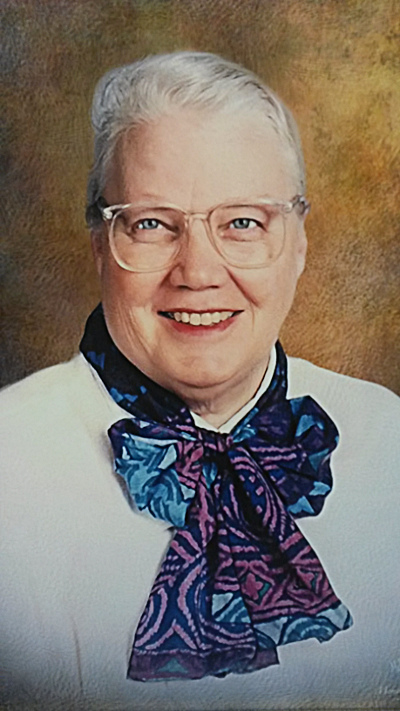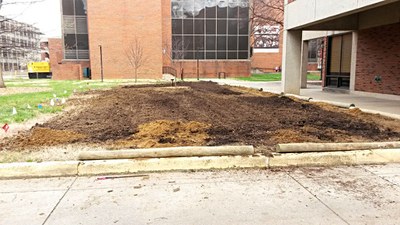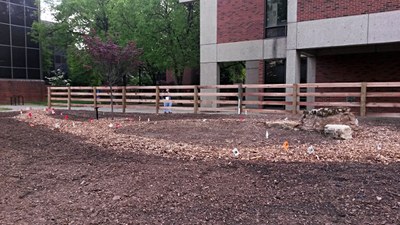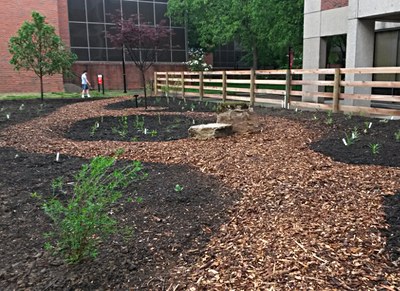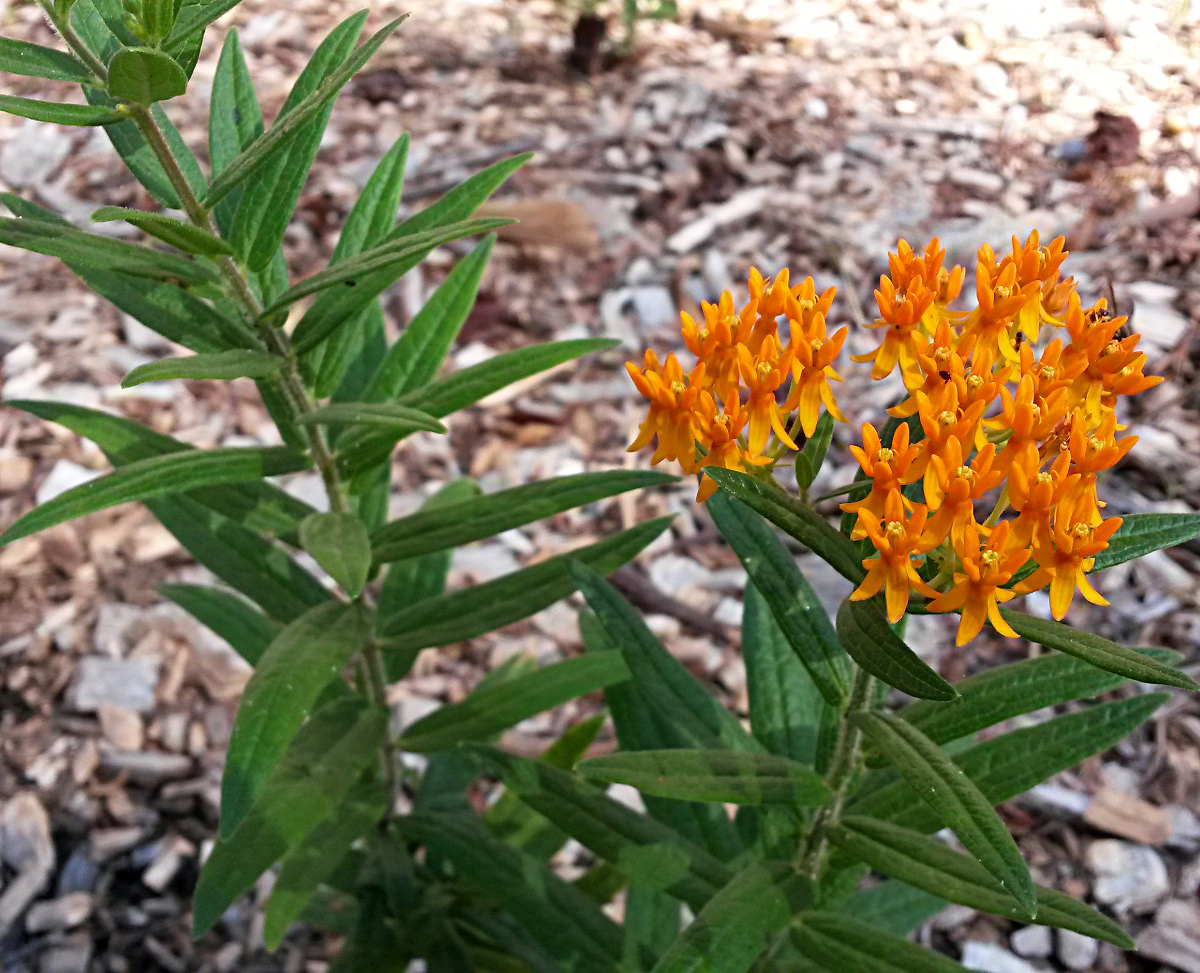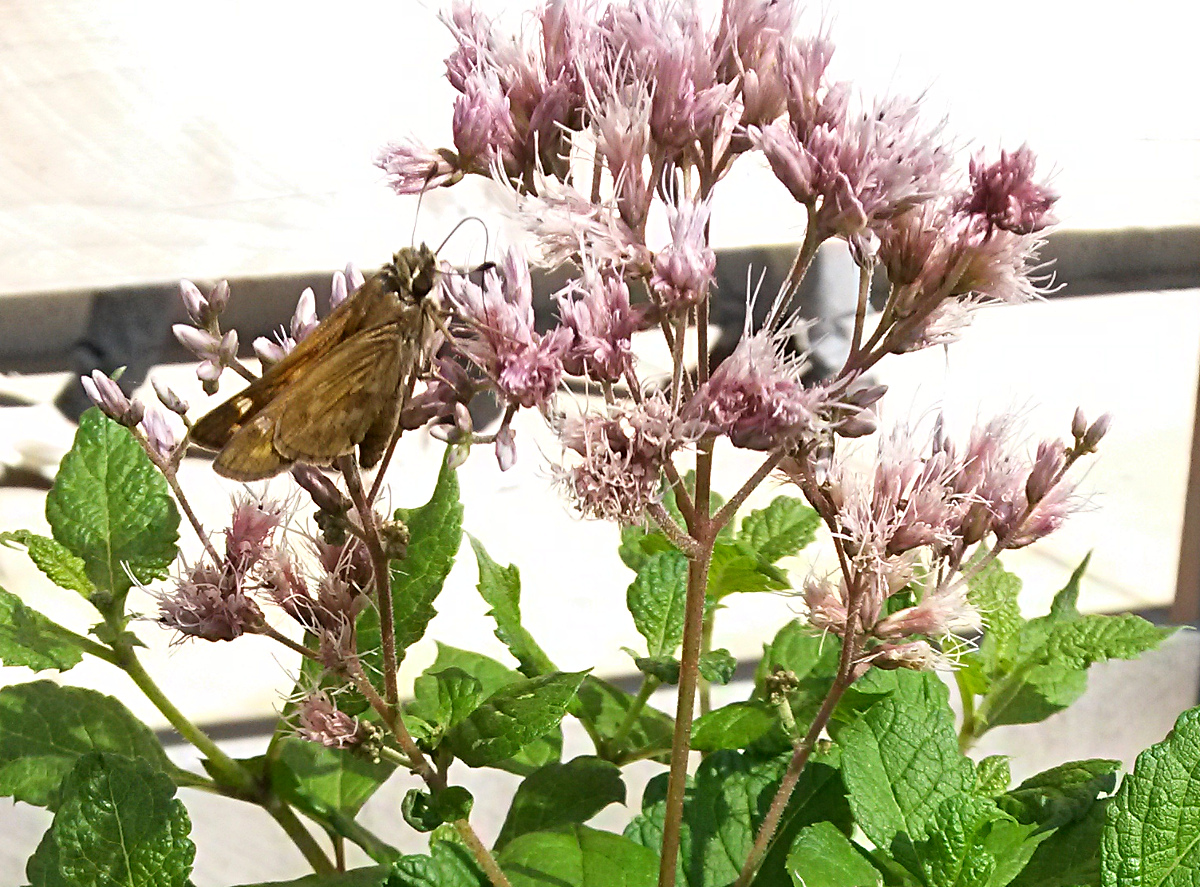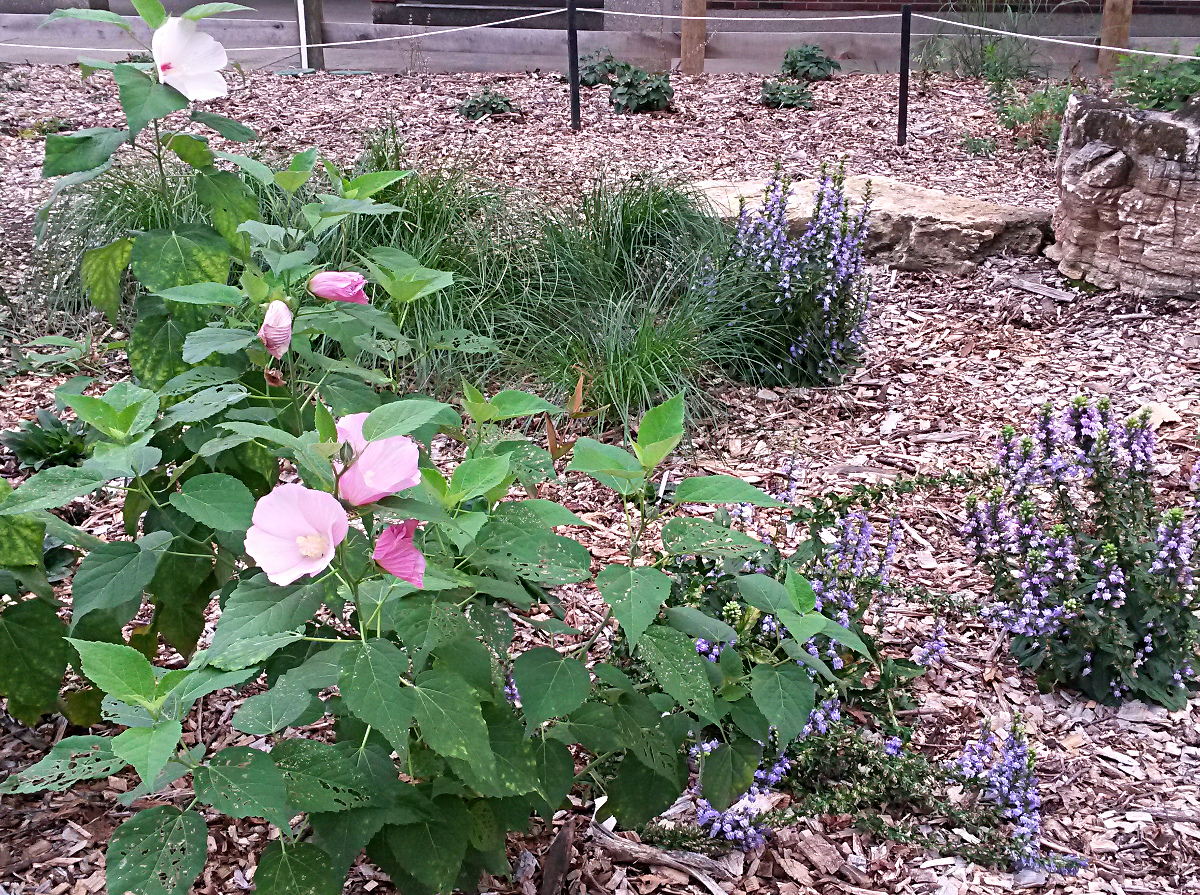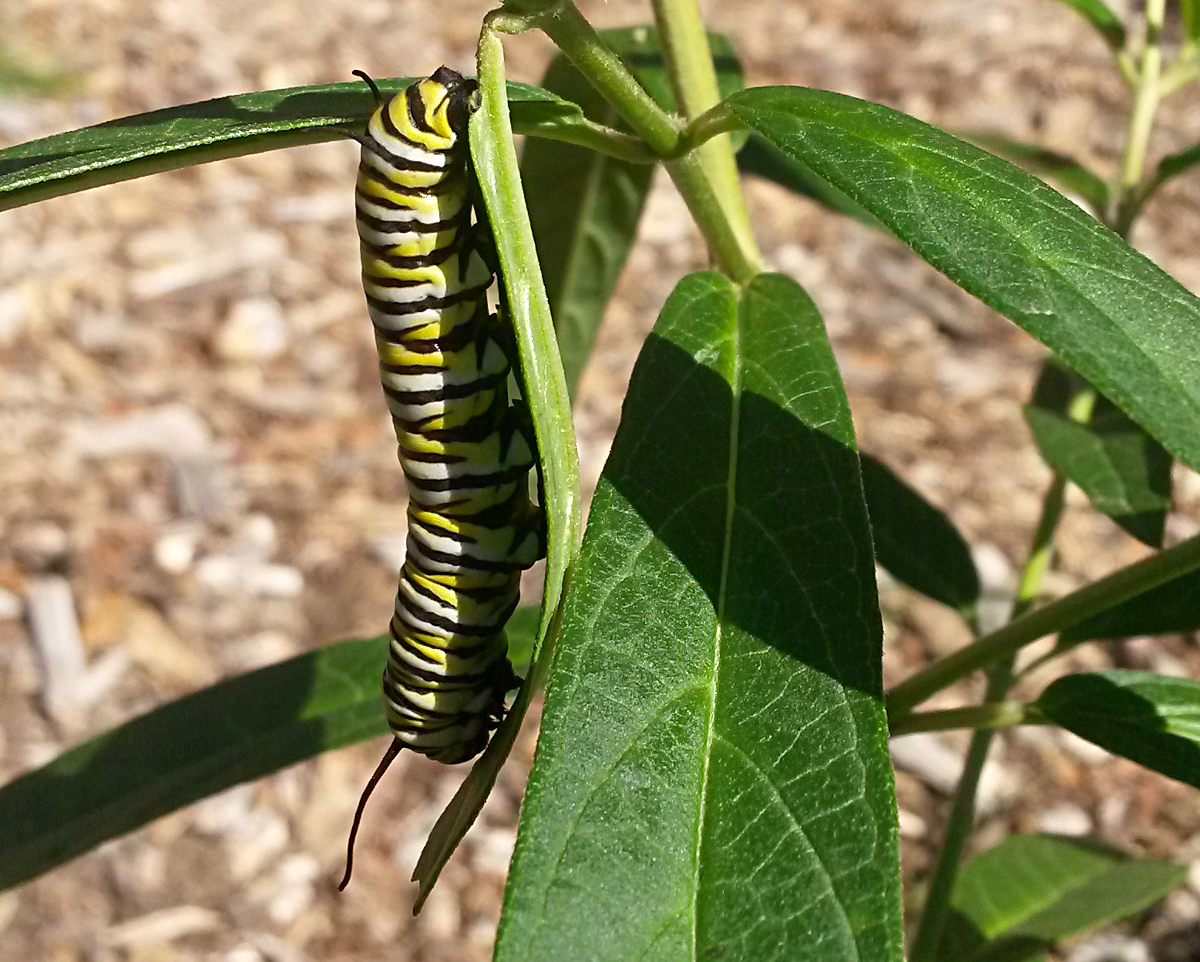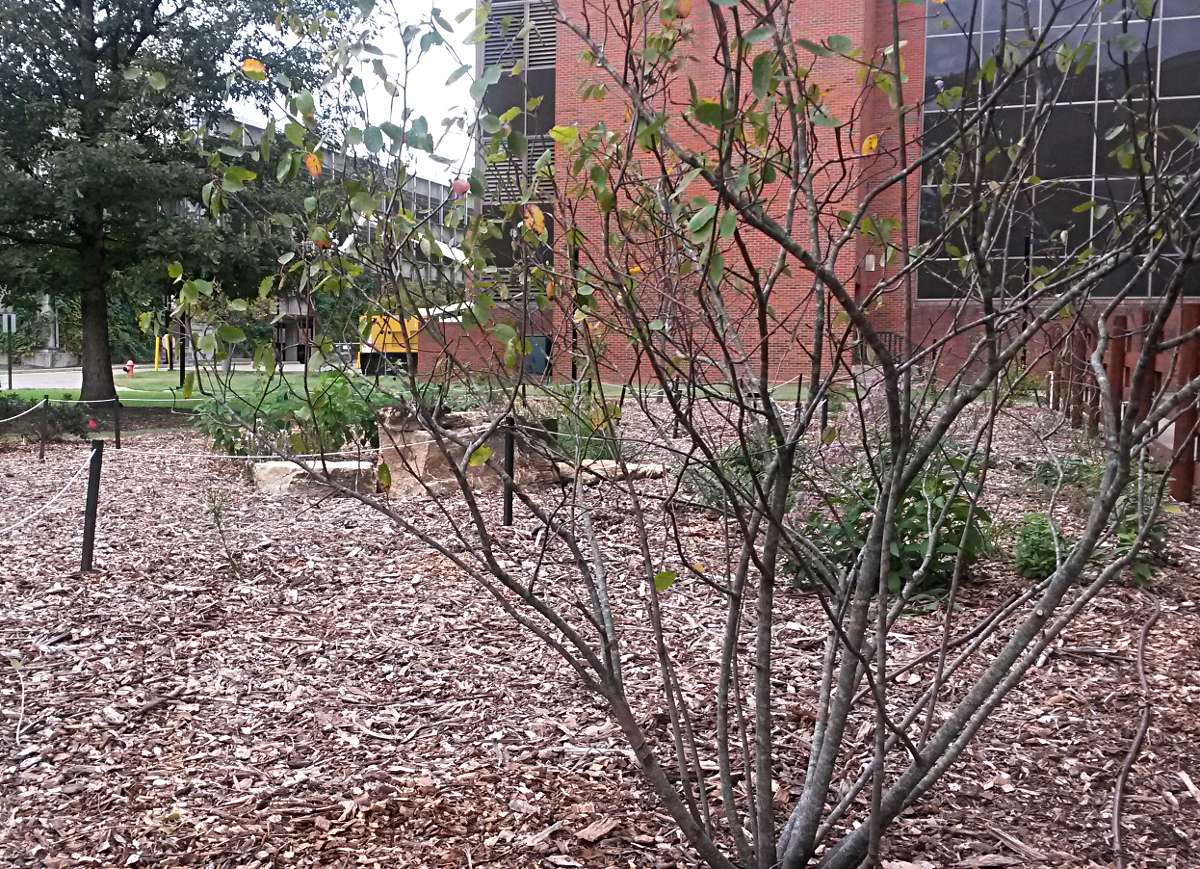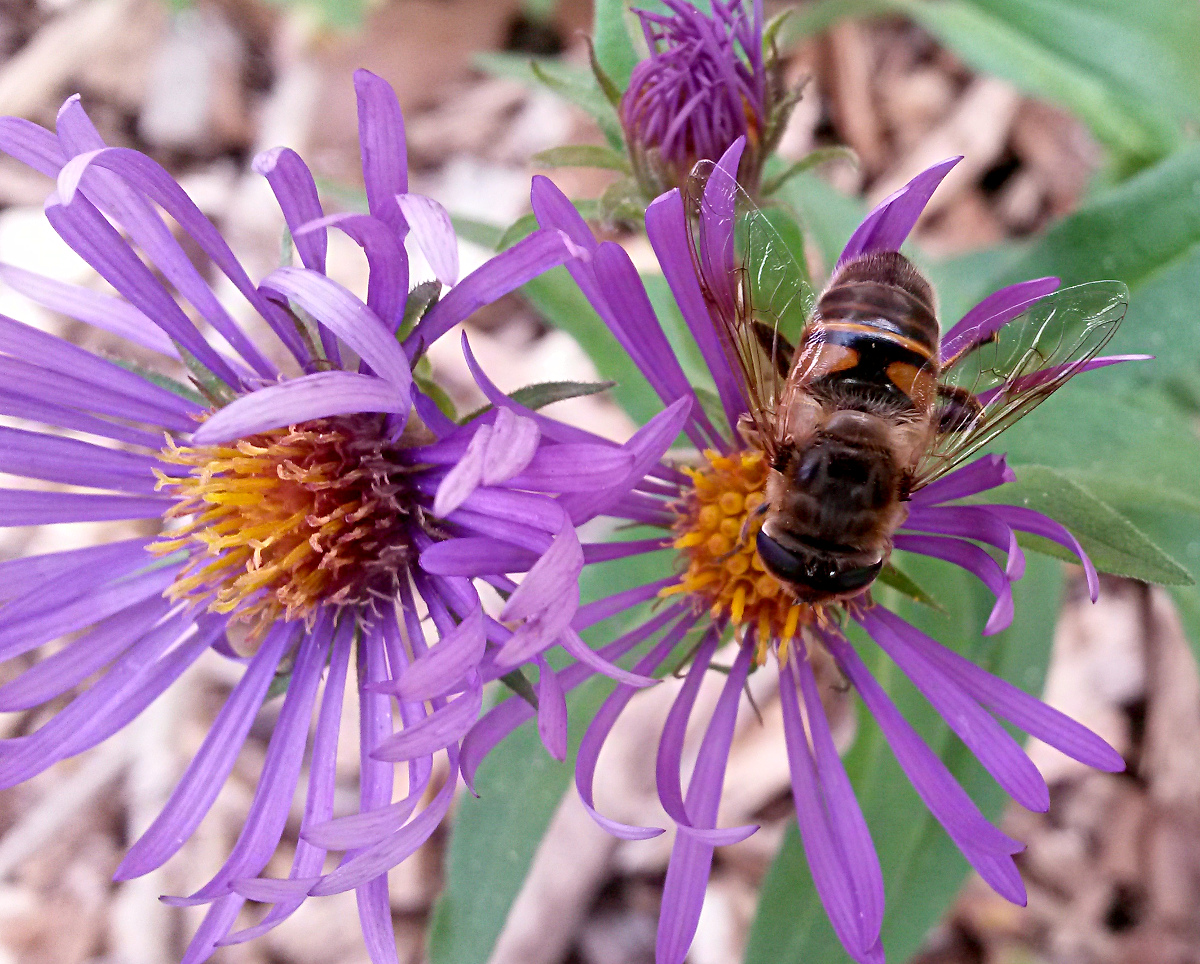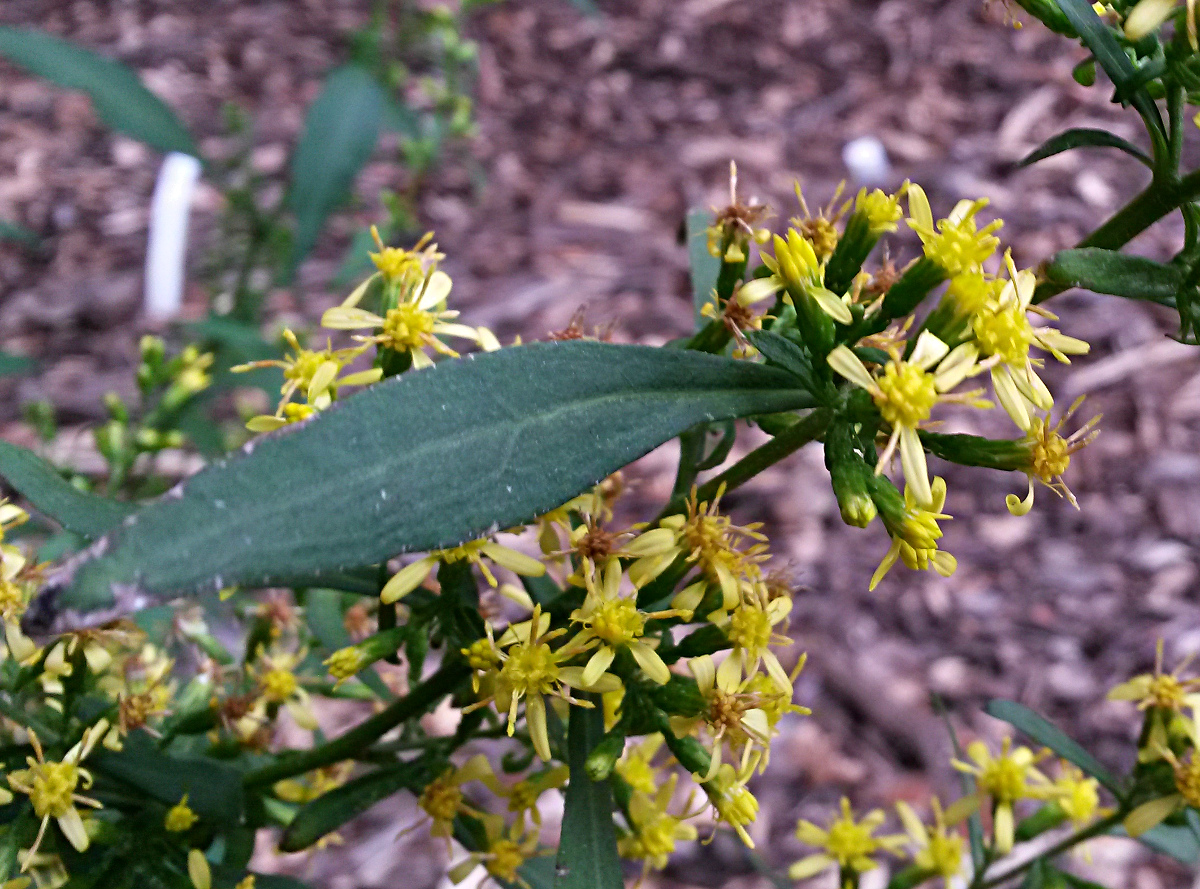Harriet A. Korfhage Native Plant Garden
Contents
- How the garden got its start.
- Who was Harriet Korfhage?
- Where is the garden and how did it get off the ground?
- Plants that bloomed in the first season and their insect visitors.
- The garden's native plant list.
- What if I want to do this myself?
- How can I donate to the native plant garden?
HOW THE GARDEN GOT ITS START
This campus garden, located on the west side of the Life Sciences Building, got its start as an idea discussed by Biology Professor Margaret Carreiro and the Biology Department Chair, Ron Fell back in September 2015. Faculty had been lamenting that with every passing year, fewer and fewer of our Biology students, most of whom now live in cities, had the opportunity to experience our natural world first-hand. While a small garden cannot begin to replace visits to our parks and state nature preserves, the native plants, insects and other species that inhabit or visit this garden offer a daily and convenient opportunity to glimpse the beauty of our natural world as it changes over the years and the seasons. We hope that the garden not only provides a haven for the small creatures around us, but also entices members of our university community and visitors to campus to pause a while and be refreshed before resuming their busy day.
The intent of the Korfhage Native Plant Garden is 1) to introduce the campus community to plants native to Kentucky, 2) to provide our students with a living lab of native plants and insects, 3) to provide a small patch of habitat for insect pollinators to live in and use as stopovers while moving across harsh urban land, and 4) to involve students in growing and rearing plants native to Kentucky, perhaps inspiring the students to become further involved in the greening of our city through tree-planting initiatives and establishing community and other pollinator gardens.
Figure 1. Harriet Korfhage. |
WHO WAS HARRIET A. KORFHAGE?
Harriet A. Korfhage (Fig. 1) was a University of Louisville alumna who received both her baccalaureate (1950) and Master’s (1963) degrees from the Department of Biology. For 30 years, Harriet taught Biology at Valley High School and was known for her efforts - and those of her students - to transform the school grounds by planting tulips, shrubs, and trees native to Kentucky. She was named Outstanding High School Science Educator in Kentucky in 1974. The Biology Department and the entire University of Louisville community thank the Korfhage family for their generous support of this garden and hope they visit often!
WHERE IS THE GARDEN AND HOW DID THE IDEA GET “OFF THE GROUND”?
Moving this idea into reality took support from many quarters, not the least of which was the able and enthusiastic help from the Horticultural Groundskeepers on campus, supervised by their Superintendent, Greg Schetler (Fig. 2).
Figure 2. The Horticultural Groundskeepers who helped start this garden. Left to Right: Rick Williams, Jon Adams, Mickey Paul, Brian Tinnel, Eric Tinnel, and Superintendent Greg Schetler. |
In October 2015, a large portion of the lawn area to the west of the Life Sciences Building was identified as the best location for the garden. The Grounds crew then got busy killing the weedy Bermuda grass that fall. In March 2016, the crew tilled the soil (Fig. 3) and brought in truckloads of compost from the university compost recycling site.
|
Figure 3. The success of any garden depends on its soil! Tilling compost into the hard clay soil. |
Once a lovely Kentucky horse fence was erected, a limestone boulder set in place, wood chip mulch added and a path delineated, it was time to plant those native plants (Figs. 4 to 5)!
|
|
Figure 4. Once the soil was prepared and the path delineated, we were ready to plant at last! |
Figure 5. First set of plants are in place and the garden gets off to a good start. April 26, 2016. |
Native perennial herbs and shrubs were selected by professors Carreiro, Schultz and Emery in collaboration with Margaret Shea of Dropseed Nursery (Goshen, KY), who planted the seedlings and shrubs in late April 2016. A water line was brought underground to the garden to supply a drip hose system and three upright water pipes for connecting hoses. However, neither the drip system nor the hoses were needed until late summer due to the unprecedented plentiful and heavy rains that occurred almost continuously in spring through mid-summer in the region.
Figure 6. Graduate student volunteer garden tenders. Notice how weeding makes them smile. Thanks y’all, you were the best! Left to Right: Lindsay Nason, Nik Short and Matt Reid. |
So, our plants were off to a good start! But so were the weeds despite the mulch! However, thanks to some of our hardy and cheerful graduate students supervised by Dr. Carreiro (Figs. 6 and 7), those weeds were easily held in check. In early Fall that year, additional shrubs (witch hazel, serviceberry and two varieties of Clethra species) were supplied and planted by the folks at the Plant Kingdom in St. Matthews. With most of the woody plants in place and providing structure for the garden, more herbaceous perennial plantings are planned for Spring 2017 to fill empty spots thanks to a generous donation from Steve and Andy Peake of Louisville.
Figure 7. Dr. Margaret Carreiro (middle) happy to have help weeding and watering the garden from graduate students Lindsay Nason (left) and Matt Reid (right). |
PLANTS THAT BLOOMED IN THE FIRST SEASON AND THEIR INSECT VISITORS
As any gardener knows, a perennial garden doesn’t really fill out until the third growing season. However, many of our perennial herbs and some of the shrubs bloomed in their first year. Here are photos of some of them and their insect visitors (Figs. 8 to 15).
Figure 8. Butterfly Weed (Asclepias tuberosa), a mid-summer blooming milkweed. Love that orange color! |
Figure 9. Joe-Pye Weed (Eutrochium purpureum) will grow much higher. A Skipper butterfly alights for some nectar. |
Figure 10. Pink and white Swamp or Rose Mallow (Hibiscus lasiocarpus) blooms alongside the Great Blue Lobelia (Lobelia siphilitica) in a moist spot in the garden. |
Figure 11. A Gulf fritillary butterfly (Agraulis vanillae) sips from the nectar provided by Swamp Milkweed (Asclepias incarnata). |
Figure 12. The Swamp Milkweed also supported our first Monarch butterfly caterpillar! If you build it, they will come! |
Figure 13. The garden in the fall. In the foreground is a spring-blooming Apple Serviceberry shrub (Amelanchier x grandifolium). |
Figure 14. Is it a bee? Nope! Autumn blooming New England asters (Symphyotrichum novae-angliae) support a pollinating hoverfly (Syrphid fly) as the growing season ends in November. |
Figure 15. Zigzag Goldenrod (Solidago flexicaulis ) provides a last hurrah of cheerful color as the final days of autumn close. |
The Garden's Native Plant List
We provide the following information for each plant: Latin name, Common Name, Plant Family, Habit, and a link from the common name to the Missouri Botanical Garden website for photographs and more information about plant requirements, characteristics, pollinators, as well as pest and herbivore tolerance.
Woody Plants
- Amelanchier x grandiflora (Apple Serviceberry) Family Rosaceae; deciduous tree
- Asimina triloba (Pawpaw) Family Annonaceae; deciduous tree
- Clethra alnifolia cultivar Ruby Spice (Sweet Pepperbush) Family Clethraceae; deciduous shrub
- Clethra alnifolia (cultivar Hummingbird; (Sweet Pepperbush) Family Clethraceae; deciduous shrub.
- Hamamelis virginiana (Witch Hazel) Family Hamamelidaceaceae; deciduous shrub/tree
- Hydrangea arborescens (Smooth hydrangea) Family Hydrangeaceae; deciduous shrub
- Hypericum prolificum (Shrubby St. John’s Wort) Family Hypericaceae; deciduous shrub
- Itea virginica (Virginia Sweetspire) Family Iteaceae deciduous shrub
- Lindera benzoin (Spice Bush) Family Lauraceae; deciduous shrub
- Lonicera sempervirens (Trumpet Honeysuckle) Family Caprifoliaceae; Woody Vine
- Sambucus canadensis (American Black Elderberry) Family Adoxaceae; deciduous shrub
Perennial Grasses and Grass Allies (Sedges and Reeds)
- Andropogon gerardii (Big Blue Stem) Family Poaceae; grass
- Carex vulpinoidea (Fox Sedge) Family Cyperaceae, sedge
- Panicum virgatum (Switch grass) Family Poaceae; grass
- Schizachyrium scoparium (Little Bluestem) Family Poaceae; grass
Forbs (Grouped alphabetically by Plant Family). All are herbaceous perennials unless noted.
- Family Acanthaceae
Ruellia humilis (Wild Petunia) - Family Apiaceae
Eryngium yuccifolium (Rattlesnake Master)
Zizia aurea (Golden Alexander) - Family Apocynaceae
Asclepias incarnata (Swamp Milkweed)
Asclepias tuberosa (Butterfly weed) - Family Aristolochiaceae
Asarum canadense (Wild Ginger) - Family Asparagaceae
Polygonatum biflorum (Solomon’s Seal) - Family Asteraceae
Echinacea purpurea (Purple coneflower)
Eutrochium purpureum (Joe-Pye Weed)
Liatris spicata (Dense Blazing Star)
Rudbeckia fulgida (Orange Coneflower)
Silphium laciniatum (Compass Plant)
Solidago rigida (Stiff Goldenrod)
Solidago nemoralis (Gray Goldenrod)
Solidago flexicaulis (Zigzag Goldenrod)
Symphyotrichum drummondii (Drummond’s Aster)
Symphyotrichum laeve (Smooth Aster)
Symphyotrichum novae-angliae (New England Aster) - Family Campanulaceae
Lobelia cardinalis (Cardinal Flower)
Lobelia siphilitica (Great Blue Lobelia)
- Family Colchicacea
Uvularia grandiflora (Large-flowered Bellwort) - Family Fabaceae
Baptisia australis (Blue False Indigo) - Family Geraniaceae
Geranium maculatum (Wild Geranium) - Family Iridaceae
Iris cristata (Dwarf Crested Iris) - Family Lamiaceae
Agastache foeniculum (Anise Hyssop)
Monarda didyma (Bee Balm)
Physostegia virginiana (Obedient Plant)
Picnanthemum incanum (Hoary Mountain Mint)
Picnanthemum tenuifolium (Slender Mountain Mint)
Salvia lyrata (Lyre-leaved Sage) - Family Malvaceae
Hibiscus lasiocarpos (Swamp or Rose Mallow) - Family Onagraceae
Oenothera macrocarpa (Missouri Primrose)
- Family Papaveraceae
Stylophorum diphyllum (Celandine Poppy) - Family Plantaginaceae
Penstemon digitalis (Foxglove Penstemon)
Penstemon hirsutis (Hairy Beardtongue)
Veronicastrum virginicum (Culver’s Root) - Family Polemoniaceae
Polemonium reptans (Jacob’s Ladder) - Family Ranunculaceae
Actaea racemosa (Black Cohosh)
Aquilegia canadensis (Wild Columbine)
Ferns and Fern Allies
- Family Dryopteridaceae
Polystichum acrostichoides (Christmas Fern) - Family Onocleaceae
Onoclea sensibilis (Sensitive Fern) - Family Osmundacea
Osmundastrum cinnamomeum (Cinnamon Fern) - Family Woodsiaceae
Athyrium filix-femina (Lady Fern)
Information For Native Plant Gardening
Compiled by Dr. Margaret Carreiro, UofL
What plants would be good for starting a small pollinator garden?
This depends on amount of sunlight, soil moisture, and soil type. These are my favorites:
- Sunny Spots (more than 6 hours daily sunlight): Pink coneflower, Swamp Milkweed, Hoary Mountain Mint, Bee Balm, Liatris, Shrubby St. Johnswort, Trumpet honeysuckle, Rattlesnake Master, Clethra spp.
- Shadier Spots (2 to 6 hours daily sunlight): Virginia Bluebells, Appendaged Waterleaf, False Indigo, Wild Ginger, Celandine Wood Poppy, Wild Geranium, Anise Hyssop
Where can I get more information about native plants and suitability for my garden?
- Louisville Nature Center has a garden on display year-round so you can see plants.
- Wild Ones has a newly reformed Louisville Chapter. They can also be found on Facebook.
- Missouri Botanical Garden Plantfinder website: http://www.missouribotanicalgarden.org/plantfinder/plantfindersearch.aspx
- Xerces Society: http://www.xerces.org/wp-content/uploads/2015/03/SoutheastPlantList_web.pdf
- Book: 100 Easy-to-Grow Native Plants For American Gardens in Temperate Zones By Lorraine Johnson. Firefly Books, Ltd. 1999
Where can I get information on invasive exotic plants (species not to plant)?
Kentucky Exotic Plant Council: https://www.se-eppc.org/ky/
Kentucky Dept. of Fish And Wildlife: http://fw.ky.gov/Fish/Pages/Nuisance-Species-Plans.aspx
If I want to do this myself, are there local suppliers in Louisville?
Yes, we have a list of a few Louisville providers of native plants and live insects. This is provided as a convenience; it is not a University endorsement of these vendors.
How can I donate to the native plant garden?
To make a gift to support the Native Plant Garden, please note Fund G2840 on the memo line of your check. Or, if making a gift online at www.fundforuofl.org/give, use the “other” option, specifying the Fund number and name.


